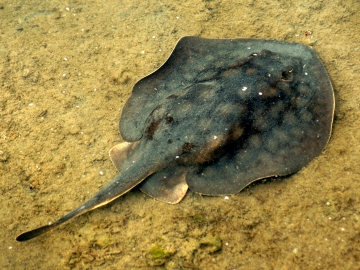SATS print 227_360 px width.jpg

The round stingray might be the first ray species known to reproduce asexually. Credit: Robin Miller, CC BY 2.0
Did you see the headlines earlier this year suggesting that a round stingray at a North Carolina aquarium may have become pregnant by one of the male sharks in her tank? As cool as the idea may sound, it is impossible. Sharks and stingrays are somewhat related (about as close as a human is to a mouse), but about 300 million years of evolution separate the species. Genetically, they’re too different to reproduce successfully. But the reality of what probably did happen is just as cool: it’s possible that Charlotte, the solo stingray, cloned herself.
Most animal reproduction is sexual, which means two parents contribute genetic material to the fertilized egg. But asexual reproduction occurs in the animal kingdom too, where offspring inherit all their genes from a single parent. One example is fragmentation in starfish: if an arm breaks off, it grows a whole new starfish while the original starfish regrows its arm. Another example is fission, in which some sea anemones and coral polyps split into two separate but genetically identical individuals.
But sharks and rays don’t split themselves in half or break off a fin and grow a whole new individual. Their form of asexual reproduction is called parthenogenesis, a Greek word for “virgin birth.” In parthenogenesis, a female self-fertilizes her eggs and gives birth to offspring that are clones of her. Scientists have documented parthenogenesis in bonnethead sharks, zebra sharks, blacktip sharks, and sawfish, but not any rays. Another possibility is that Charlotte’s pregnancy did arise from sexual reproduction, but she stored the sperm from a mating encounter years earlier. So how do we know which it was? A DNA test of Charlotte’s offspring will tell whether it was sperm storage or self-cloning—and confirm that it wasn’t a rogue shark.


